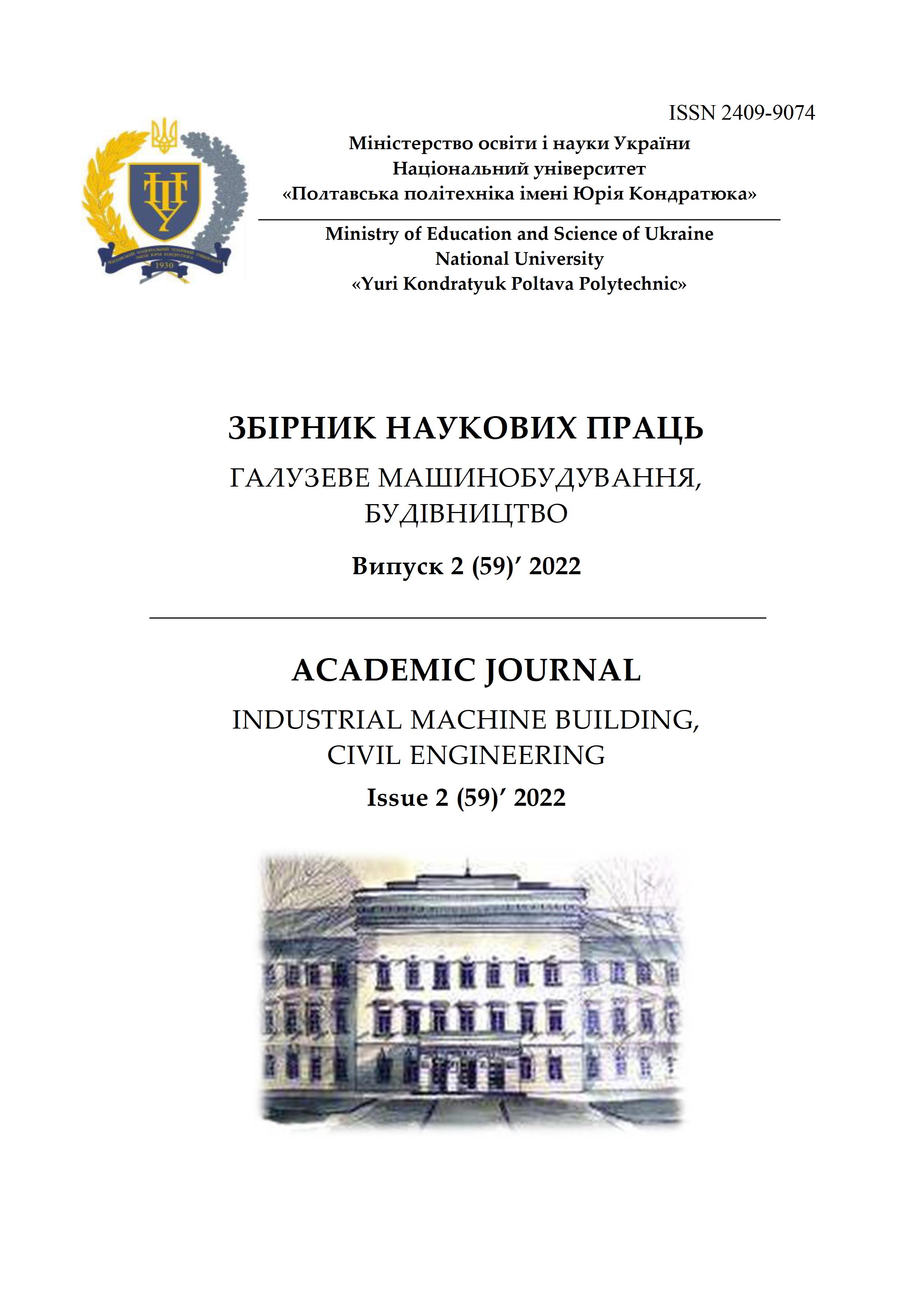The practice of strengthening the base of a slab foundation of a multi-story building with soil-cement elements
DOI:
https://doi.org/10.26906/znp.2022.59.3103Keywords:
engineering and geological element, eolian-deluvial deposits, ground base, vertical soil-cement element, slab foundation, testing of cement soil for uniaxial compression, soil deformation modulus, settlementAbstract
The characteristic geotechnical conditions of modern high-rise construction are considered. The engineering and geological conditions of the site were analyzed. In particular, it was noted that loose soils lie up to a depth of 2.2 m, and below 13.0…13.5 – eolian-deluvial deposits (sandy and silty loams with a deformation modulus of 5…7 MPa). The territory is flooded. An effec-tive constructive-technological solution was tested using the drilling-mixing method of placing soil-cement elements to strength-en the base made of highly compressible clay soils under the slab foundation of a multi-story residential building with a parking lot under the conditions of the existing building. The results of tests of soil cement samples, which were selected during the execution of works, for uniaxial compression are presented.
References
DBN V.2.1-10: 2018. (2018). Bases and foundations of buildings and structures. Main principles. Kyiv: Ministry of Regional Development, Construction, and Housing of Ukraine.
DBN V.1.1-45:2017. (2017). Buildings and structures in difficult engineering and geological conditions. Main principles. Kyiv: Ministry of Regional Development, Construction, and Housing of Ukraine.
Cheng Y.M., Law C.W. & Liu L. (2021). Analysis, Design and Construction of Foundations. London: CRC Press.
doi.org/10.1201/9780429293450. DOI: https://doi.org/10.1201/9780429293450
Briaud J.-L (2013). Geotechnical Engineering: Unsaturated and Saturated Soils. Hoboken: John Wiley & Sons.
doi.org/10.1002/9781118686195 DOI: https://doi.org/10.1002/9781118686195
Katzenbach R., Leppla S., Seip M. & Kurze S. (2015). Value Engineering as a basis for safe, optimized and sustainable design of geotechnical structures. Proc. of the XVI ECSMGE Geotechnical Engineering for Infrastructure and Development. Edinburg, pp. 601–606.
doi.org/10.1680/ecsmge.60678.vol2.073.
Bruce D. (2000). An introduction to the deep soil mixing methods as used in geotechnical applications. Report FHWA-RD-99-138. U.S. Dept. of Transportation, Federal Highway Administration.
Van Impe W., Verástegui Flores R. & Van Impe P. (2005). Deep mixing research results in under water conditions. Proc. of the 16th Intern. Conf. on Soil Mechanics and Geotechnical Engineering. Rotterdam: Millpress Science Publishers, V. 3, pp. 1275-1278.
Denies N. & Lysebetten G.V. (2012). Summary of the short courses of the IS-GI 2012 latest advances in deep mixing Proc. of the Intern. Symposium on Ground Improvement IS-GI, pp. 73–123. Brussels.
Zotsenko N, Vynnykov Yu. & Zotsenko V. (2015). Soil-cement piles by boring-mixing technology. Energy, energy saving and rational nature use, pp. 192–253, Oradea University Press.
Denies N., Huybrechts N., De Cock F., Lameire B., Maertens J., Vervoort A. & Guimond-Barret A. (2015). Thoughts on the durability of the soil mix material. Proc. of the XVI ECSMGE Geotechnical Engineering for Infrastructure and Development. Edinburg.
Kryvosheiev P., Farenyuk G., Tytarenko V., Boyko I., Kornienko M., Zotsenko M., Vynnykov Yu., Siedin V., Shokarev V. & Krysan V. (2017). Innovative projects in difficult soil conditions using artificial foundation and base, arranged without soil excavation. Proc. of 19th Intern. Conf. on Soil Mechanics and Geotechnical Engineering, pp. 3007–3010. Seoul. ICE Publishing, Seoul.
doi.org/10.1680/geot.1997.47.3.693. DOI: https://doi.org/10.1023/A:1021278500190
Krysan V. & Krysan V. (2018). Jet and jet-mixing grouting. Academic Journal. Series: Industrial Machine Building, Civil Engineering. Is. 2(51)′. pp. 68–72. Poltava National Technical Yuri Kondratyuk University.
doi.org/10.26906/znp.2018.51.1294 DOI: https://doi.org/10.26906/znp.2018.51.1294
Vynnykov Yu., Voskobiinyk O., Kharchenko M. & Marchenko V. (2017). Probabilistic analysis of deformed mode of engineering constructions’ soil-cement grounds. Proc. of the 6th Intern. Scientific Conf. “Reliability and Durability of Railway Transport Engineering Structures and Buildings”, 116.
doi.org/10.1051/matecconf/201711602038 DOI: https://doi.org/10.1051/matecconf/201711602038
DSTU B V.2.1-4-96. (1997). Soils. Methods of laboratory determination of strength and deformability characteristics. Kyiv: State Committee of Ukraine for Urban Planning and Architecture.
DSTU B V.1.2-17:2016. (2017). Instruction on scientific and technical monitoring of buildings and structures. Kyiv: State Committee of Ukraine for Urban Planning and Architecture.
Downloads
Published
How to Cite
Issue
Section
License
Copyright (c) 2022 Vladimir Krysan, Vitali Krysan, Anton Hasenko

This work is licensed under a Creative Commons Attribution-NonCommercial-NoDerivatives 4.0 International License.
Published 2022-12-17




